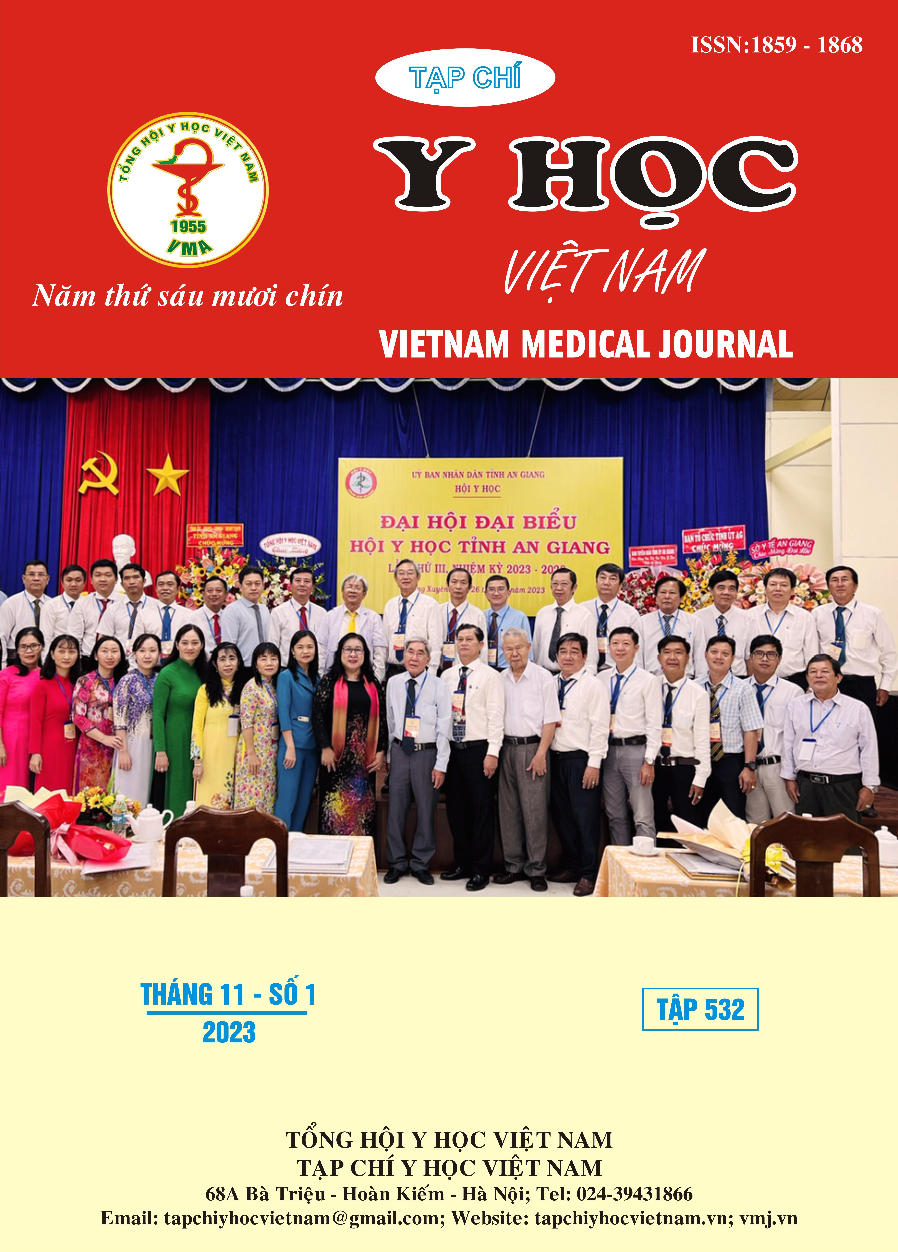STUDY OF LEFT VENTRICULAR GLOBAL LONGITUDINAL STRAIN IN HEART FAILURE PATIENTS WITH CHRONIC KIDNEY DISEASE
Main Article Content
Abstract
Objectives: To investigate the characteristics of left ventricular global longitudinal strain (GLS) and associations of GLS with clinical and laboratory characteristics in heart failure patients with chronic kidney disease. Subjects and methods: Cross-sectional descriptive study, analysis with comparison with controls. A total of 84 inpatient heart failure patients at the Department of Cardiology, 103 Military Hospital from January 2023 to June 2023, divided into 2 groups: the study group (42 heart failure patients with CKD) and the control group (42 heart failure patients without CKD). Patients underwent speckle tracking echocardiography to assess left ventricular GLS using a PHILIPS EPIQ7C ultrasound machine with QLAB 9.0 software installed. Results: Median age: Study group 77.2 ± 10.29; control group 64.3 ± 15.23. Average glomerular filtration rate of study group: 42.6 ± 10.97 ml/ph/1.73m2; Mean EF: Study group 52.2 ± 17.68%, control group 51.2 ± 19.87%. The GLS of the study group was not statistically significant compared to the control group (-11.23 ± 3.29% vs -11.43 ± 3.69%; p>0.05). GLS in patients with ischemic heart disease (-10.28 ± 3.12%) decreased statistically significantly compared with patients without IHD (-12.51 ± 3.13%); p<0.05. In the study group, the correlation between GLS and urea levels was inversely correlated (r = -0.333; p <0.05). There was no correlation between GLS and age, creatinine levels, log (NT-proBNP), red blood cell count, and hemoglobin (p>0.05); GLS correlated inversely with Dd (r = -0.375; p<0.05); but correlated with EDV (r=0.397; p<0.05) and ESV (r=0.428; p<0.05). Conclusion: In heart failure patients with CKD, GLS positively correlated with EDV and ESV but negatively correlated with Dd.
Article Details
Keywords
global longitudinal strain, heart failure, chronic kidney disease, speckle tracking echocardiography
References
2. D. S. Keith, G. A. Nichols, C. M. Gullion, et al. (2004). Longitudinal follow-up and outcomes among a population with chronic kidney disease in a large managed care organization. Arch Intern Med, 164(6): 659-63.
3. G. Manjunath, H. Tighiouart, J. Coresh, et al. (2003). Level of kidney function as a risk factor for cardiovascular outcomes in the elderly. Kidney Int, 63(3): 1121-9.
4. A. Lopez-Candales, D. F. Hernandez-Suarez (2017). Strain Imaging Echocardiography: What Imaging Cardiologists Should Know. Curr Cardiol Rev, 13(2): 118-129.
5. S. O. Tröbs, J. H. Prochaska, S. Schwuchow-Thonke, et al. (2021). Association of Global Longitudinal Strain With Clinical Status and Mortality in Patients With Chronic Heart Failure. JAMA Cardiol, 6(4): 448-456.
6. M. Bansal, R. R. Kasliwal (2013). How do I do it? Speckle-tracking echocardiography. Indian Heart J, 65(1): 117-23.
7. R. Dhingra, R. S. Vasan (2012). Age as a risk factor. Med Clin North Am, 96(1): 87-91.
8. Nguyễn Duy Toàn, Đỗ Hải Linh, Nguyễn Thanh Xuân (2022). Nghiên cứu chỉ số sức căng dọc thất trái bằng siêu âm đánh dấu mô cơ tim ở bệnh nhân suy tim mạn tính. Vietnam Medical Journal.
9. Đỗ Văn Chiến, Nguyễn Thị Kiều Ly, Phạm Nguyên Sơn (2021). Đánh giá một số thông số sức căng và vận động xoắn của thất trái bằng siêu âm tim đánh dấu mô 3D ở bệnh nhân suy tim mạn tính. Journal of 108 - Clinical Medicine and Phamarcy.


